
It comes as no surprise that Jefferson Beauregard Sessions, trying to cram in as much of his Make America White Again agenda as he can before he gets the boot from the CelebrityPresident, has turned his focus toward turning back the clock to a time when affirmative action was white. In effect, that is almost all of American history except perhaps a decade or two. A recent DOJ memo sought lawyers to volunteer to work on “investigations and possible litigation related to intentional race-based discrimination in college and university admissions”. The project is slated to be run out of the DOJ front office, where Trump appointees work, rather than the Educational Opportunities Section, where career civil servants normally handle cases involving schools and universities. The civil rights division often performs work that other attorneys lack the expertise or resources to do. One hint about the objectives of this initiative is the use of the term “intentional race-based discrimination” usually indicating an assault on people of color on behalf of an oppressed white majority. Another clue is that white people seldom talk about themselves as a race outside the context of white supremacists like Jeff Sessions.
The purpose of the civil rights division in the Department of Justice is literally being flipped on its head. Roger Clegg, an official there during the Reagan administration essentially rewrote the history of the civil rights act by saying,” [they] were deliberately written to protect everyone from discrimination, and it is frequently the case that not only are whites discriminated against now, but [other minorities].” It is not a surprise that Clegg, now president of the conservative Center for Equal Opportunity, who makes his living filing lawsuits alleging discrimination against whites, would misstate the mission of the division. Reagan, when governor of California, began the script to make affirmative action white using the conservative concept of “colorblindness”, where the consideration of race is construed as reverse discrimination against whites.
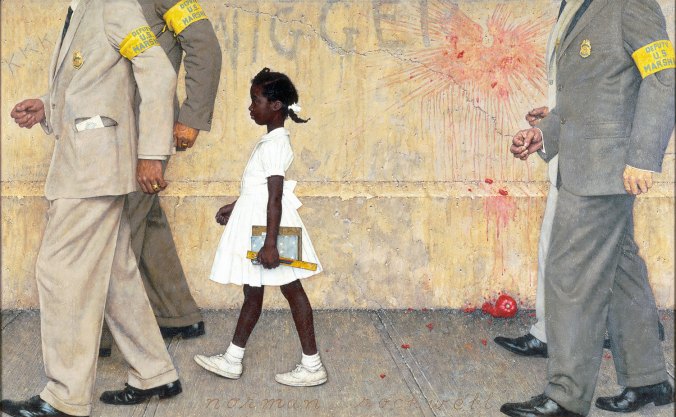 The DOJ Civil Rights Division was created by Attorney General William Rogers, a Republican under Dwight Eisenhower in 1957 to fight Black exclusion from voting rolls in the Jim Crow South. Rogers was part of the decision that sent federal troops to Little Rock to enforce desegregation of the high school. Just for the record, the Civil Rights Law of 1964 was passed to finally enfranchise all Black people and eliminate racial discrimination against them in the workplace. It also prohibited discrimination by race, color, or religion in public accommodations, think restaurants, and facilities, think colored water fountains and bathrooms and encouraged desegregation in public schools, 10 years after Brown v Board of Education outlawed school segregation. Note that it banned discrimination against women only in employment. The legislation that followed later expanded considerations to women and sexual orientation, but apparently not to the gender transformed as interpreted by the current DOJ. Even the civil rights division states on its website (amazing that these words haven’t been changed yet), “The Civil Rights Division of the Department of Justice, created in 1957 by the enactment of the Civil Rights Act of 1957, works to uphold the civil and constitutional rights of all Americans, particularly some of the most vulnerable members of our society.” There are few whites who would claim that most vulnerable tag, except those that are gay or transgendered or poor, and yet discrimination by class remains legal.
The DOJ Civil Rights Division was created by Attorney General William Rogers, a Republican under Dwight Eisenhower in 1957 to fight Black exclusion from voting rolls in the Jim Crow South. Rogers was part of the decision that sent federal troops to Little Rock to enforce desegregation of the high school. Just for the record, the Civil Rights Law of 1964 was passed to finally enfranchise all Black people and eliminate racial discrimination against them in the workplace. It also prohibited discrimination by race, color, or religion in public accommodations, think restaurants, and facilities, think colored water fountains and bathrooms and encouraged desegregation in public schools, 10 years after Brown v Board of Education outlawed school segregation. Note that it banned discrimination against women only in employment. The legislation that followed later expanded considerations to women and sexual orientation, but apparently not to the gender transformed as interpreted by the current DOJ. Even the civil rights division states on its website (amazing that these words haven’t been changed yet), “The Civil Rights Division of the Department of Justice, created in 1957 by the enactment of the Civil Rights Act of 1957, works to uphold the civil and constitutional rights of all Americans, particularly some of the most vulnerable members of our society.” There are few whites who would claim that most vulnerable tag, except those that are gay or transgendered or poor, and yet discrimination by class remains legal.
Reverse discrimination is a nonentity. Majorities discriminate against minorities, not the other way around because discrimination is seated in the power and control of the majority, at least from an institutional perspective. The premise underlying lawsuits alleging discrimination against whites is the assumption that the place denied to the white person belonged to him/her and it is being taken away by the minority; in other words, acceptance at college is a white person’s to lose. For all the obfuscation, white people are not discriminated against; show me a white man who didn’t get a job because he was white and I’ll eat my hat. Someone else may have gotten the job who wasn’t white, but that is not the same as the white person wasn’t hired because he was white. To put that another way, if a Black and white candidate are equally qualified, there is no reason why the Black one should not get the position, unless you assume that the white one was supposed to have the job and it was stolen from him, much like the Supreme Court nomination from Merrick Garland.
A History of Reverse Discrimination
Reagan Republicans, frustrated that Africans Americans had made some progress after civil rights legislation empowered a growing Black middle class, were looking for ways to slow the progress as they were riding the wave of their Southern strategy success to make Dixie Republican.
Enter the concept of colorblindness which is often summarized as “I don’t see race.” Originally from Justice Harlan’s majority opinion in the Plessy v Ferguson decision that pronounced separate but equal as the constitutional standard, “The Constitution is colorblind, and neither knows nor tolerates classes among citizens.” Just to be historically accurate, the Constitution counted slaves as ⅔ of a white man until theoretically corrected by the 13th and 14th amendments.
That color, as opposed to race, is not self evident is of course an absurdity. The human eye registers color; skin color is the first thing any one person sees in another. Humans have the natural instinct to categorize others in order to assess any danger, activate “fight or flight” mechanisms or to recognize friendlies. What colorblindness is meant to imply is that recognition of skin color is not associated with any inherent ideas of racial differences. This is comforting to most whites, wanting to avoid discussion of race in order to steer clear of unknowingly offending anyone, either negatively or positively. It effectively shuts down any discussion of race in our society, leaving many issues unrecognized. Think of someone who describes another by height and weight and hair color and clothing but never mentions that the person is a dark skinned African American; just adding that detail would make them far easier to pick out of a crowd.
To ignore skin color or racial characteristics is to ignore differences in experience that form an essential part of who a person is. Jokingly, one of my Chinese friends mentioned that he was 5 years old before he found out that everyone doesn’t have rice three meals a day. That says something about his roots and his adaptations. My experience as an African-American is not the same as that of my white friends or even my children. And yet, it is recognition of that very difference that many are trying to avoid.
When we move from the personal to the political, colorblindness has evolved into a cover to maintain white superiority. It is the poker chip to see the civil rights movement and raise them one. By denying the inequities of the Black experience, it deftly shifts the blame for the socioeconomic disparities to African-Americans themselves, using the pervasive commonsense underpinnings of racial stereotypes to recast whites as innocent victims.
Conservatives have seized the term colorblindness to signal their opposition to affirmative action. They contend that government should not and cannot consider race, not even when, as in 2007, public school officials assigned students to preserve integration already in place. Conservatives have pulled Harlan’s words out of their original context, in which colorblindness was used to support racial restrictions meant to codify what he saw as the natural inferiority of colored people. By placing it in a modern context, Conservatives were hoping to use the concept to do just that.
Although the NAACP successfully used the color blind argument early on, it shifted legal arguments to the promotion of integration in the 1970s when it became apparent that despite the Brown decision, Southerners had proved wiley in retaining school segregation. In 1965, less than 1 in 100 Black students attended formerly white schools and the number of white students in predominantly black schools could almost be counted on both hands. The weakness of the colorblind argument for the NAACP is that scrubbing of all mention of race from laws meant the government had to do nothing to promote integration. Southerners had used this logic to argue that while governmental action was forbidden from enforcing segregation, it was likewise impotent to act against voluntary segregation and further from enforcing race based integration as well. By 1965, the conservative version of colorblind government was being used to beat back attempts to integrate public schools, thus circumventing the 1954 Supreme Court ruling.
The legal use of this version of colorblindness did not gain much traction in the Supreme Court until Nixon’s four justice appointments, including Lewis Powell, author of the conservative plan to create its own intelligentsia to legitimize their ideas, as well as the elevation of William Rehnquist, a Goldwater speechwriter and known to favor the Plessy decision to Chief Justice in 1986. By 1979, the Court had adopted a standard that accusations of “racism as hate” must be supported with proof of malice; all other evidence is circumstantial and can not be considered. However, while the absence of malice test invalidated most discrimination arguments, it left affirmative action plans still in tact. In that year, in University of California v Bakke, where the use of racial quotas was overturned, the Court found affirmative action programs may be appropriate in some circumstances, altering its stance to one that made motivation irrelevant. Any notice of race by the government was unconstitutional. This ruling effectively meant that when government mentioned race, as in most affirmative action programs, the program was overturned while discrimination cases that avoided the mention of race would be affirmed using the standard of proof of malice. The courts had again returned to a role that dashed the hopes of African Americans for equitable treatment.
Conservative colorblindness draws on the liberal understandings of race and racism from the mid 20th century; race is only a superficial physical characteristic. But it rejects the liberal connection between race and group differences that understands the connection of race to group social position and individual capacity is the result of social practices not the cause. Instead, conservatives simply insists that race is a matter of superficial difference that has no influence at all on individual, social or group circumstance. If race is simply a question of biology, which of course it is not biological at all, then one individual can’t be held responsible. Rather it is social practices by racial groups that account for differences in social circumstances. If whites are not directly aided under affirmative action programs, it’s because of their social position. Social context has been neatly disjointed from race and differential treatment by whites. Race is no more than an accident of nature much like a birthmark.
From there, it is a short jump to redefining affirmative action as racism. If racism is merely treating someone differently on the basis of race, it doesn’t have to involve abuse or subordination. Any differential treatment at all is morally wrong, but most especially based on a socially irrelevant characteristic. This completely side steps the degradation and exploitation that accompanies racial discrimination. The viciousness of genocide of Native Americans, the internment of the Japanese during WWII and the dehumanization of Jim Crow laws are morally wrong, not just examples of differential treatment. There is no moral equivalency between affirmative action, as conceived as just another harm and those other historical governmental actions.
And yet conservatives have bolstered their arguments by recalling the civil rights origins of the idea of colorblindness, citing references to Martin Luther King’s call for the judgement of people “not by the color of their skin but by the content of their character.”, ignoring his context emphasing race-conscious remedies. The evocation of this history makes the idea of colorblindness seem enlightened, rather than reactionary.
Race as an accident of birth without implications contradicts conservative political attacks that minorities are a threat to whites. To bridge this gap, they have turned to differences in cultures between different ethnicities which is understood by their supporters as veiled references to race. For liberals it is less stressful to talk about ethnicity without realizing that ethnicity and race are not synonymous. But it serves the purpose of absolving the larger society of the responsibility for socioeconomic disparities by blaming defective ethnic cultures rather than white dominated institutions. It provides a rationale for elimination of government action in the future. If disparities are rooted in faulty ethnic subcultures, then government programs are futile and it would be wrong for government to force ethnic cultures to change.
The concept of ethnicity gained popularity after WWIl when revelations of Nazi extermination strategies for not just Jews, but also Ukrainians, Gypsies (Romas) and others exposed the horrific consequences of anti-Semitism and race based politics. The US had been grappling with race since the 1920s when there were officially 20 distinctly different race categorizations among immigrants, including Irish, Poles Slavs, etc. After the war, Americans of European descent increasingly saw themselves as racially undifferentiated white people, perhaps as more generations separated them from their origin countries, but continued to recognize their subgroup cultural rituals. The Irish, for instance, for centuries denigrated by the English as an inferior race, have shed the bitterness, still very much alive and well in the old country, for the American “everyone’s Irish on St. Patrick’s Day”. English disdain for the Irish indentured servants sailed with them to America, firmly implanted in Jamestown and flourished throughout the country at least the 1930s.
By the mid 1990s, conservatives bundled the ideas that African Americans did not possess bedrock American virtues of hard work and individual achievement because they had not tried to surmount the difficulties they faced, but settled for welfare, into what can be termed “free enterprise racism”. Whites believed they possessed the values and work ethic that allowed individual achievement in capitalist society. Non-whites occupied the bottom rungs of society because they were handicapped by an inferior subculture that no government program could remedy. This is closely tied to the American ideal of rugged individualism.
The embellishment of themes of ethnicity by the late 80s helped feed a conservative narrative that whites are victims too. In 2011, more than half of white Americans believed that anti-white discrimination was as big a problem as discrimination against people of color. Among conservative Republicans, that number was almost 66%; among those who were steady viewers of Fox News, which broadcast a steady stream of supposed news stories and celebrity pundits blaming and demeaning HIspanics, Muslims and African Americans, the number was even higher. These sentiments reflect the maturation of the color blindness argument that states;
- Race is just a matter of blood, with no connection to past or present social practices or policies
- Racism means differential treatment by race. Since affirmative action treats whites differently because of race, it is racism
- Ethnicity shows that whites do not exist as a dominant group but is a conglomeration of ethnic minorities which have just as much right as other minorities to protect their own group interests
- Group cultures differ; it’s not racist to acknowledge that white ethnics have succeeded, and nonwhite groups have failed on the basis of differences in group capacity and behavior. Moreover, since groups are the masters of their own fate, it is futile (in addition to racist) for government to give some groups special handouts.
During the first four years of the Obama administration, the number of Democrats expressing prejudiced views against Blacks was 30%, an alarmingly high number for the party that has historically been a friend to the Black community. This figure is indicative of the penetration of free enterprise racism and foreshadows the Obama voter who voted for Trump in 2016. Among Republicans, the number increased from 71% to 79%, almost three quarters of the party. Their responses were gathered through a survey that asked them to agree or disagree with statements like “over the past few years, Blacks have gotten more economically than they deserve” and “if Blacks would only try harder, they could be just as well off as whites”. Ian Haney Lopez, author of Dog Whistle Politics summarizes the situation well, “the confluence of racial prejudice and conservative politics is the new racism” (p102).
Against this historical backdrop, the Sessions DOJ, has decided to take up the cudgel of anti-white discrimination pursued during the Bush administration but suspended during the Obama administration that rightly pursued discrimination by white institutions against minorities as intended by the civil rights legislation. The Bush administration use of political appointees in the DOJ front office served as model for the current action. Under Bush 43, the administration violated Civil Service hiring laws by filling its career ranks with conservatives with little experience in civil rights law. The division brought fewer cases alleging systemic discrimination against minorities; instead filed more cases alleging reverse discrimination against whites, like a 2006 lawsuit forcing Southern Illinois University to stop reserving certain fellowship programs for women or members of underrepresented racial groups.
Still, the Bush administration pursued cases involving discrimination against African Americans. It filed amicus briefs in Grutter v Bollinger and Fisher v University of Texas supporting diversity and filed Voting Rights Act enforcement lawsuits as well as fair housing cases. When Obama assumed the office, new attorneys were appointed to reorient the division to its original orientation, to insure equity in treatment of minorities long treated unfairly.
The cause of the disadvantaged white majority is again being championed in the DOJ starting with lawsuits against colleges for race based admissions policies. The setting is an interesting choice for a party where a majority of its supporters feel that education has a negative effect on the country. While the majority of the nation’s over 4000 colleges are private, court rulings can be applied to schools that receive federal funds which approaches almost 100%. The choice is probably one that pivots off of current lawsuits working their way through the federal courts filed by Asian Americans, spearheaded by Roger Clegg mentioned earlier.
Asians in the US
Asian Americans have filed a suit against Harvard for discriminatory admissions practices. The suit alleges that there are de facto quotas for Asians who consistently make up about 15-20% of admissions from year to year. The suit compares Harvard’s policies to Jewish quotas in the 1920s and 30s in response to a freshman class composition that was 20% Jewish. In a Princeton study, Asians need SAT scores higher by 140 points to gain acceptance at private colleges, called the “Asian tax.” The suit also cites a comparison of Asian-American enrollment at Harvard as 18% in 2013 and similar numbers of 14-18% at other Ivy League schools with the 34.8% at UCLA, 32.4% at Berkeley and 42.5% at Caltech. The suit claims that the lower numbers outside California are the result of illegal racial preferences but that claim completely ignores the fact that Asians make up only 14% of the state’s population and that state institutions are mandated to enroll a significant proportion of their student bodies from the state, reinforced by the higher cost of tuition for out of state applicants.
In other lawsuits, Edward Blum president of Students for Fair Admissions, a conservative group, is suing Harvard and University of North Carolina and University of Texas, Austin. At Harvard, similar percentages of African Americans, Hispanics, whites and Asian-Americans have been admitted year after year, despite fluctuations in application rates and qualifications which some contend are purposely predetermined by the administration. The Harvard class of 2021 is 14.6% African American, 22.2% Asian-Americans, 11.6% Hispanic, and 2.5% Native American. For the case, filed in 2014, the plaintiffs have subpoenaed records from 4 high schools with large numbers of Asian-American students to look at whether students with comparable qualifications have different odds of admission that correlates with race and how stereotypes influence the process.
Current Asian-American lawsuits against University of North Carolina alleging 14th amendment violation of equal protection under the law, the practice of letting race help some and harm others is unconstitutional. UNC contends that students are treated as individuals, not classified as belonging to any particular group.
 Asians have not always been stereotyped as super academic achievers. Chinese laborers were first “invited” to the US to build the railroads; considered expendable, they worked under inhumane and unsafe conditions. The Chinese, confined in “Chinatowns” were ostracized, often facing “No Chinese Allowed” signs outside their communities. When the railroad lines were completed, many politicians wanted the Chinese to be expelled. The Chinese wanted to stay, living on in their Chinatowns, steeped in their own cultural practices. By 1921, immigration from Asia and the Middle East was completely banned. Since immigration has been permitted again since 1965, the number of Asian immigrants increased 2500% to represent more than 30% of all US immigrants in 2014.
Asians have not always been stereotyped as super academic achievers. Chinese laborers were first “invited” to the US to build the railroads; considered expendable, they worked under inhumane and unsafe conditions. The Chinese, confined in “Chinatowns” were ostracized, often facing “No Chinese Allowed” signs outside their communities. When the railroad lines were completed, many politicians wanted the Chinese to be expelled. The Chinese wanted to stay, living on in their Chinatowns, steeped in their own cultural practices. By 1921, immigration from Asia and the Middle East was completely banned. Since immigration has been permitted again since 1965, the number of Asian immigrants increased 2500% to represent more than 30% of all US immigrants in 2014.
Asians in this country come from several different countries, the largest groups in the US are Indians, Chinese, Filipino, Vietnamese, Korean, in order of size. Smaller groups include Japanese and Southeast Asians like Cambodians including the Hmong, primarily refugees from the Vietnam era. The latter groups are not known for their academic prowess and often struggle economically; only about 35% attend college. California has the largest population of Asian residents, about 15% percent followed by NY-NJ. Overall, Asian Americans make up 5.6% of the US population, about 18 million; 28-36 % of Asian Americans fall between the ages 18-20 (2015) and the group makes up about 5% of public high school students. In 2014, there were 1.4 million Asians enrolled in college.
 Asians are among the most successful ethnic groups in the US. A large number immigrate with college educations and advanced degrees. The 54% of Asian-Americans who have college degrees compares with 23% for Blacks and 36% whites. As a result, Asians have higher incomes and their economic success allows them access to better schools. As calculated in a Pew Report, 54%, 56%, 42% and 33% respectively of Asians, whites, Hispanics and Blacks have access to better schools.
Asians are among the most successful ethnic groups in the US. A large number immigrate with college educations and advanced degrees. The 54% of Asian-Americans who have college degrees compares with 23% for Blacks and 36% whites. As a result, Asians have higher incomes and their economic success allows them access to better schools. As calculated in a Pew Report, 54%, 56%, 42% and 33% respectively of Asians, whites, Hispanics and Blacks have access to better schools.
The State of College Admissions
Just for the record, it should be noted throughout this discussion, it’s not clear if the numbers given for any group actually reflect hyphenated Americans. It is likely that many university statistics for African Americans include any student with darker hues of brown skin, like Caribbean Islanders and even foreign African students. Similarly, the Asian category probably includes large numbers of Asians, particularly mainland Chinese students who are coming to this country to attend colleges and even high schools. Chinese students are coming in droves to graduate and postgraduate programs as well, welcomed by schools because they pay full tuition without need of financial assistance packages. A walk through almost any university science lab will show a preponderance of Chinese and Indian doctoral and postdoctoral students across all disciplines. Overstayed student visas account for a significant portion of illegal Asian immigrants, currently the largest group of illegal immigrants, surpassing the number of those from Mexico and Central America. (Dare I say it, another problem misattributed by the Trump administration to the wrong group. We’ll need a wall around West Coast airports to stem this tide.)
In 2016, overall, 69.7 percent of high school graduates were enrolled in colleges or universities; 82% of high school seniors gained high school diplomas, but only 64% enrolled immediately in college 2016. During the Obama administration high school completion rates increased, with much of the increase among minorities. Part of the 22% lower number of students immediately enrolling in college reflects the fact that minorities are less likely to go immediately to college and more likely to go to community and for profit colleges which they are less likely to complete. The low completion rate is linked to the practice of for-profit colleges scamming inappropriate students to enroll for dubious degrees, enhancing their bottom line with federally guaranteed loans for which students are saddled with a mountain of debt. (see Lower Ed by Tressie McMillan Cottom). About 50% of low income students of all races enroll in 4 year institutions. About 68% of white seniors enrolled in college immediately compared to 58% of Black seniors.
To provide some perspective, 71% of the US population is white, 17% Hispanic and 13% Black. Looking at children in the US, there are about 30 million school age children, ages 6-17 years, 15.9 million (53%) are white, 7.8 million (25%) Hispanic and 5.4 million (18%) African American. These numbers help to explain some of the shifts in demographics in this country that have disturbed the TrumpPack. Hispanics are the fastest growing ethnic group, not because of illegal immigration, but because they have the highest fecundity rate which means they’re having the most children while whites have the lowest. When these children become adults, the percentage of people of color will outnumber whites.
In the wake of Supreme Court decisions that banned the use of admissions quotas and consideration of race in some circumstances, universities, or at least progressive ones have struggled to create admissions policies to diversify their student bodies to include more underrepresented minorities and low income students more representative of the society at large. These school have developed policies that give some preference to factors other than strictly test scores or GPA. Others, less generously interpret this to mean that minorities, meaning Black and Hispanic students, are accepted with lower test scores and/or GPA and by inference, don’t deserve to be there. Designated federally recognized underrepresented minorities are Blacks, Hispanics, American Indian/Alaskan Native and Hawaiian/Pacific Islanders, both the latter groups with a minuscule number of applicants in the national applicant pool. Asians are not included as a federally recognized minority but are generally considered in admissions statistics. The fact that they represent a small percentage of the population, 5%, and are significantly overrepresented on many campuses is likely attributable to their economic well being, access to better schools in addition to academic achievement.
My own experience as the director of a highly ranked postgraduate medical education program demonstrated that the vast majority of applicants are paper cut-outs of each other: high tests scores and GPAs, a reasonable range of extracurriculars, coming from equivalent quality schools. At least we had the advantage of an interview which allows observation of communication skills, so critical for a successful physician and critical thinking skills. Many undergraduate programs do not have the opportunity to consider these additional factors although many universities do have alumnae interviewers. For college admissions departments, the objectives are to identify the coterie of students who will successfully complete their degrees and achieve in their lives to follow. Those students are not necessarily those with the highest test scores.
Schools have taken different approaches to promoting diversity, one is giving preference to low income students as a surrogate for underrepresented minorities. California universities, forbidden from using race in admissions decisions by the 1996 Proposition 209 have substituted socioeconomic factors, hoping to draw from low income pools that have a significant number of minorities. Others like University of Texas set a specific percentage of the top students at every high school for acceptance. When schools do consider race as one factor, their decision making seems more opaque.
It is this opacity that has Asian Americans feeling that they are being held to a higher standard than others, as do some whites. In states like Michigan, Washington and Florida where universities have rejected affirmative action policies, they are giving an edge to students who have overcome disadvantages like poor neighborhoods, troubled schools and language barriers.
Still, campus racial diversity has eluded most schools, although most of these methods increased the number of low income students of all backgrounds. In California, students in the top 9% of their high school class are guaranteed admission to at least one campus. In 2011, most of the system adopted a “holistic” review, where the entirety of the applicant’s circumstances is considered, although admissions have said that no factor is weighted more than any other. Universities have reached out to teachers, counselors and parents to help students apply. Despite these efforts, only about 30% of freshmen enrolled on any one of the 10 UC campuses were Latino while that group makes up 52% of graduating high school students. The number of Black and Latino students at UCLA and Berkeley, the most elite California state campuses has actually declined; with 3% African American, 39% Asian, 14% Hispanic and 26% white at Berkeley. While the number of Asians and Hispanics remained essentially changed from 1994 at 40% and 15% respectively, whites increased to 30% and decreased to 8% for Blacks.
In Florida, Jeb Bush banned racial preferences in 1999 and instituted a policy of guaranteeing admissions to a state college to the top 20% of their high school classes. The effects are unclear with some contending that the number of Hispanics increased because of a change in how ethnicity was reported. The number of Black students has declined, with the flagship University of Florida, Gainesville reporting 6% enrolled in 2015 down from 12% in 2000 in a state with a 17% Black population.
Columbia University is among the most diverse colleges in the country because of substantial efforts to create just that. The proportion of Hispanics and African Americans has increased to 28% of acceptances for 2017 with 40% white and 25% Asian.
If meritocracy is the ideal system for college admission, as some opponents of affirmative action contend, achievement would be the only criteria. Whites might be the real losers under those circumstances and campuses might find themselves swamped with Asian-Americans. Already, Asians over-represent their proportion of the population. While there are three times as many white school aged children than Asians, the percentage of white students who attend college is lower than for Asians despite the equivalent percentages of students attending better schools. In addition, the number of Asian immigrants, spared from the limitations being considered by the Trump administration since many come on student visas, continues to increase the pool of applicants while colleges look favorably on the income stream. Caltech prides itself on being a bastion of meritocracy. While underrepresented minorities make up 16% of the undergraduate population nationally, at Caltech in 2016, Blacks were 1.7%, whites 30% and Asians were 33%, while they make up only 11% of the state’s population.
A huge contributor to the difficulty with matriculating low income students is the availability of financial aid especially at the more elite schools. Without substantial assistance, many low income students will opt for cheaper state institutions or even community college. At some institutions, larger applicant pools have made admissions more selective, further increasing competition. University of Florida has a new program AIM which chooses candidates using geographical region, being the first in the family to attend college as well as test scores.
There are some considerations that get top priority, regardless of academic performance. For colleges with sports programs, sports prowess has allowed a steady stream of athletes to attend schools for which they were not academically prepared. Certainly, minorities have been the beneficiaries as well as victims of these exceptions. There has been considerable press about athletes graduating without adequate academic skills; the NCAA has taken some steps to ensure better academics for athletes as have some schools, but the big money in college sports continues to drive the need to win and the college acceptance rate.
Another exception is the legacy student. Europeans think the practice of giving special consideration to the daughters and sons of alumnae is an enigma. The son or daughter of an alumnae is not necessarily better prepared for a university than any other candidate but it does feed a stream of alumnae contributions. It also advantages the wealthy who may be persuaded to make larger contributions to influence their child’s admission. Children of alumnae may be less well prepared, think George Bush 43 at Yale as one glaring example. The legacy applicant pool is overwhelmingly white, with the exception of HBCUs, given the limited number of minorities college attendees and their proportions in the population.
The broader question is what do we as a nation want our educational system to achieve? The country committed to universal public education long before many other countries and unlike much of the world, even developed countries. We have the largest number of higher education institutions in the world, over 4000, for all levels of achievers, including community colleges. The free market has produced a variety of for-profit institutions as well, some fraudulent like Trump University, others that provide associate degrees and technical skills.  The reason to provide universal education is to produce a workforce capable of supporting a burgeoning economy by maximizing the potential of every citizen and harness those capacities to contribute to the country’s wellbeing. That mission is best fulfilled by finding the best and the brightest, regardless of race, color or creed. Arbitrary connivances like Jim Crow laws or the internment of the Japanese wasted precious resources that could have benefited the society at large. The movie, Hidden Figures, is the tale of extraordinary talent that was almost lost to NASA except for the individual dogged persistence and hope of four Black women that made the Apollo landing on the moon possible.
The reason to provide universal education is to produce a workforce capable of supporting a burgeoning economy by maximizing the potential of every citizen and harness those capacities to contribute to the country’s wellbeing. That mission is best fulfilled by finding the best and the brightest, regardless of race, color or creed. Arbitrary connivances like Jim Crow laws or the internment of the Japanese wasted precious resources that could have benefited the society at large. The movie, Hidden Figures, is the tale of extraordinary talent that was almost lost to NASA except for the individual dogged persistence and hope of four Black women that made the Apollo landing on the moon possible.
The country has never depleted the store of new and inventive ways to circumvent equality. Now it is the challenge of growing income inequality and cultural segregation by class into “sameness” communities, where they live and socialize only with people like themselves. Schools are increasingly made up of poor or rich, predominantly minority or white students. No doubt, there are many students who would like to attend colleges that replicate their majority white high school experiences. Many of those who attend elite universities will go on to work in an increasingly white work world of their own making; they will live in wealthier white neighborhoods, work in mostly white workplaces and socialize with mostly white friends of similar income. Their exposure to minorities will be as service workers-cleaners, waiters, store clerks, etc. That seems particularly true if the government in the next eight years continues to be the current one.
But income inequality is also crystallizing class differences that have underlain the myth of our classless society. Higher income families are creating dynasties, where their children have the best education, but more importantly exist in a milieu where the influential interact, with the subsequent access to the networking that creates the best opportunities across all fields. As J D Vance points out in Hilly Billy Elegy, the poor don’t understand the language or decorum that enables them to feel comfortable with these elites. There is a whole subculture of etiquette exemplified by the French derived cup sizes at Starbucks, the explosion of herbs, vegetables and cuts of meat now so common on many restaurant menus and the succession of the most acceptable overpriced brand names valued in the moment. Many low income students are made to feel stupid in the presence of more economically well off peers, so much so that they exclude themselves from interaction with the very people who will become the decision makers in their futures. This may be one of the best arguments for campus diversity across incomes and ethnic groups.
Do we as a nation want our college campuses to reflect the general population? The obvious argument for diversity is to develop the talent of all types of people. In addition, if the campus is more reflective of diversity in the world, perhaps the work place will grow to reflect that diversity as well, because it allows for interactions between groups that help concretize them as real people rather than stereotypes. Such interactions pave the way for empathy, so crucial to communication between disparate groups.
Do we want to educate our native sons and daughters first and foremost or educate international students who will take their talents back to their native countries? We used to believe that we didn’t have to worry about competition from other countries and we had the generosity of spirit to help other countries develop. America First supporters may want to change that, despite the First Family’s evident infatuation with Chinese businesses, markets and immigrants.
This is merely a thought exercise after all. Since the vast majority of colleges are private, each institution will set its own course although the electorate may have some influence at the state level on state institutions. Californians have weighed in on their university system with Proposition 209 and Governor Bush changed policies in Florida. But if there is such a thing as national consensus any more, we should discuss inequities in education that are wasting so much of the country’s talent.
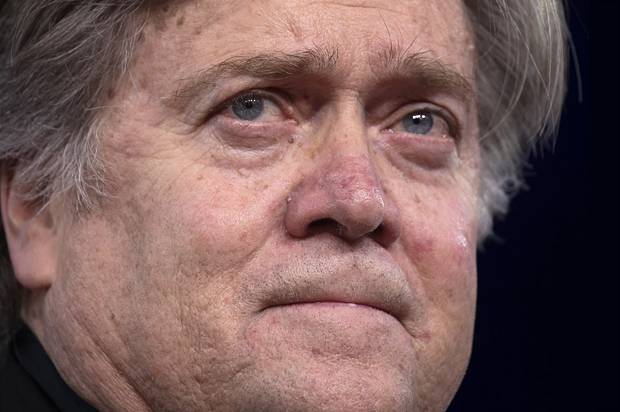
 So too the intersection with white supremacists. The American culture of which Bannon speaks is naturally white, Protestant Christian in its most restrictive dimensions. This completely discounts multiple influences in American culture which will be difficult to disentangle even if the government can eliminate recent immigrants. The fate of large numbers of Asians from various countries
So too the intersection with white supremacists. The American culture of which Bannon speaks is naturally white, Protestant Christian in its most restrictive dimensions. This completely discounts multiple influences in American culture which will be difficult to disentangle even if the government can eliminate recent immigrants. The fate of large numbers of Asians from various countries The last plank in Bannon’s strategy for deconstructing the state has found common ground with Trump – leave middle level government department positions unfilled. It is not just laziness or a limited pool of candidates or even general disorganization that has kept 45 from filling posts; “A lot of those jobs, I don’t want to appoint, because they’re unnecessary to have,” said Trump in a Fox News interview. He posits a leaner staff is a more efficient one. That may be just a Trumpian excuse, in view of some self imposed obstacles like a loyalty test and a general impression of upheaval within the administration where jobs can last for as little as one week, hardly worth the effort of extensive background checks within the paperwork nightmare of government employment. Another obstacle, like the ban on hiring lobbyists for 5 years, appears to have been campaign dressing while the departments have been requesting waivers for former lobbyists to work with the regulations that they were paid to oppose less than a year ago. One lobbyist for a company making 3D CT scanners for airport security now serves as
The last plank in Bannon’s strategy for deconstructing the state has found common ground with Trump – leave middle level government department positions unfilled. It is not just laziness or a limited pool of candidates or even general disorganization that has kept 45 from filling posts; “A lot of those jobs, I don’t want to appoint, because they’re unnecessary to have,” said Trump in a Fox News interview. He posits a leaner staff is a more efficient one. That may be just a Trumpian excuse, in view of some self imposed obstacles like a loyalty test and a general impression of upheaval within the administration where jobs can last for as little as one week, hardly worth the effort of extensive background checks within the paperwork nightmare of government employment. Another obstacle, like the ban on hiring lobbyists for 5 years, appears to have been campaign dressing while the departments have been requesting waivers for former lobbyists to work with the regulations that they were paid to oppose less than a year ago. One lobbyist for a company making 3D CT scanners for airport security now serves as  In one of his last acts, Bannon most certainly crafted Trump’s speech to denounce racism as evil very care
In one of his last acts, Bannon most certainly crafted Trump’s speech to denounce racism as evil very care His TrumpPack greeted his pronouncements with their usual selective hearing and zeal. The white supremacists and neo-Nazis appreciated his cover and thanked him for it. At it’s core the white nationalist movement is by definition an anti-establishment movement. The natural expectation is that the establishment would easily condemn such a movement, would be obligated to condemn its sworn enemy. On the contrary, the president specifically defined the melange of neo-Nazis, white nationalists and supremacists marching with tiki torches on Friday night in Charlottesville as “good people”. Amidst the clamor about the violence, now removed from the cause, he salvaged the White Man First message by reiterating it from behind the presidential seal, symbolic of the stance of almost two centuries of presidents, on the superiority of the white race. In sum, an assault on Confederate monuments is an assault on white culture. He even embellished it by equating Robert E Lee with the founding fathers Thomas Jefferson and George Washington. Simply put, for those who agree that this is a valid cause, the white nationalist movement is not evil incarnate, but a viable alternative to consider joining. The movement saw it as a watershed moment; the president of the United States was hawking their membership drive. For people on the fence, Trump stamped white nationalists with his seal of approval. White supremacists are giddy with the prospects that their movement could exponentially explode. They’re planning a campaign of Confederate monument demonstrations across the South.
His TrumpPack greeted his pronouncements with their usual selective hearing and zeal. The white supremacists and neo-Nazis appreciated his cover and thanked him for it. At it’s core the white nationalist movement is by definition an anti-establishment movement. The natural expectation is that the establishment would easily condemn such a movement, would be obligated to condemn its sworn enemy. On the contrary, the president specifically defined the melange of neo-Nazis, white nationalists and supremacists marching with tiki torches on Friday night in Charlottesville as “good people”. Amidst the clamor about the violence, now removed from the cause, he salvaged the White Man First message by reiterating it from behind the presidential seal, symbolic of the stance of almost two centuries of presidents, on the superiority of the white race. In sum, an assault on Confederate monuments is an assault on white culture. He even embellished it by equating Robert E Lee with the founding fathers Thomas Jefferson and George Washington. Simply put, for those who agree that this is a valid cause, the white nationalist movement is not evil incarnate, but a viable alternative to consider joining. The movement saw it as a watershed moment; the president of the United States was hawking their membership drive. For people on the fence, Trump stamped white nationalists with his seal of approval. White supremacists are giddy with the prospects that their movement could exponentially explode. They’re planning a campaign of Confederate monument demonstrations across the South.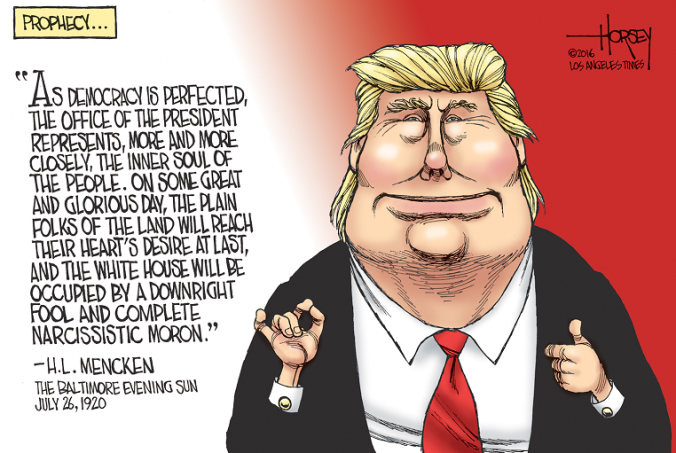
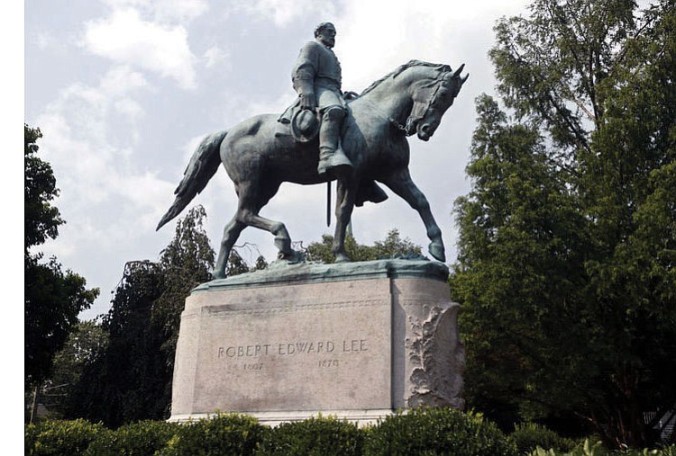 Learning about Robert E Lee is not difficult, one has only to look at records of the time. Anything later could be tainted by the desire to resurrect the general as a pantheon among men; much of what has been written about him since his death has been an effect to erase the man he was. Robert E Lee chose to leave West Point to lead the Confederate Army, after turning down its presidency. His choice was not to fast track to the rank of General. It was to defend what he saw as an essential way of life that was the lynchpin in the maintenance of civilization itself. There could be no stauncher defender of slavery in service of civilizing the primitive Black race. In that effort he sacrificed millions of Americans who died on both sides, roughly 5% of the country’s population and 20% of white males living in the south he held dear.
Learning about Robert E Lee is not difficult, one has only to look at records of the time. Anything later could be tainted by the desire to resurrect the general as a pantheon among men; much of what has been written about him since his death has been an effect to erase the man he was. Robert E Lee chose to leave West Point to lead the Confederate Army, after turning down its presidency. His choice was not to fast track to the rank of General. It was to defend what he saw as an essential way of life that was the lynchpin in the maintenance of civilization itself. There could be no stauncher defender of slavery in service of civilizing the primitive Black race. In that effort he sacrificed millions of Americans who died on both sides, roughly 5% of the country’s population and 20% of white males living in the south he held dear. 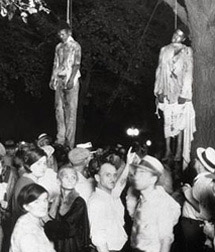 As president of Washington College, now William and Lee, Lee turned a blind eye to two attempted lynchings nor he punish racial harassment, including student excursions to rape Black woman off campus.
As president of Washington College, now William and Lee, Lee turned a blind eye to two attempted lynchings nor he punish racial harassment, including student excursions to rape Black woman off campus. 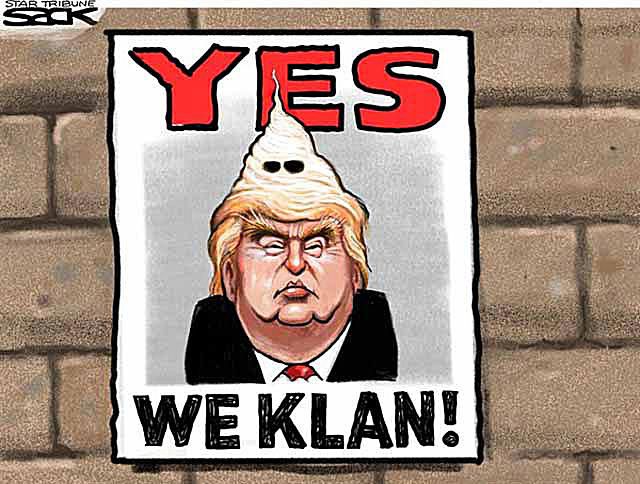
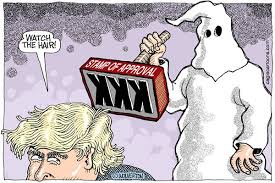
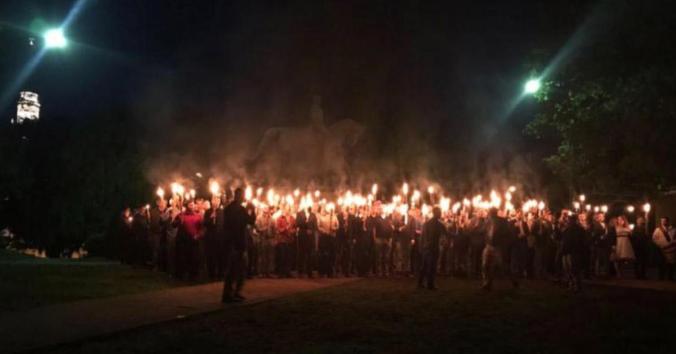 But 45 tried hard to establish that equivalency. In response to repeated questions directed at whether he thought the alt-left is as bad as the neo-Nazis. “There were some good people in that crowd protesting the removal of Robert E Lee’s statue, believe me.” Here, 45 conflated the march the night before with the Saturday events and in doing so, really stepped in shit. There were not good people there. People who march in torchlit parades screaming “Jews will not replace us” and “Heil Trump” are not good people. The marchers congregated outside a synagogue, leaving the congregation, fearful for its safety, to cancel services. People who march in the midst of Nazi flags and swastikas are not good people. Only rodents run in rat packs; if they didn’t want to be confused with scum they shouldn’t have fallen in with them. If they wanted to oppose the monument removal, they should have come back on a different day.
But 45 tried hard to establish that equivalency. In response to repeated questions directed at whether he thought the alt-left is as bad as the neo-Nazis. “There were some good people in that crowd protesting the removal of Robert E Lee’s statue, believe me.” Here, 45 conflated the march the night before with the Saturday events and in doing so, really stepped in shit. There were not good people there. People who march in torchlit parades screaming “Jews will not replace us” and “Heil Trump” are not good people. The marchers congregated outside a synagogue, leaving the congregation, fearful for its safety, to cancel services. People who march in the midst of Nazi flags and swastikas are not good people. Only rodents run in rat packs; if they didn’t want to be confused with scum they shouldn’t have fallen in with them. If they wanted to oppose the monument removal, they should have come back on a different day.  Finally, frustrated by more press questions on moral equivalency between the left and white supremacists, Trump could only bellow, “I’m not putting anybody on a moral plane…I think there’s blame on both sides…I have no doubt about it and you don’t have any doubt about it either… there are two sides to the country.” He revealed something genuine here, something fundamental. His perspective is limited to the end of his nose; no one has ever accused Trump of far-reaching vision. And his moral tank is completely dry. He doesn’t understand what moral equivalence is. The question is what two sides did the Supremacist-in-Chief mean?
Finally, frustrated by more press questions on moral equivalency between the left and white supremacists, Trump could only bellow, “I’m not putting anybody on a moral plane…I think there’s blame on both sides…I have no doubt about it and you don’t have any doubt about it either… there are two sides to the country.” He revealed something genuine here, something fundamental. His perspective is limited to the end of his nose; no one has ever accused Trump of far-reaching vision. And his moral tank is completely dry. He doesn’t understand what moral equivalence is. The question is what two sides did the Supremacist-in-Chief mean? 
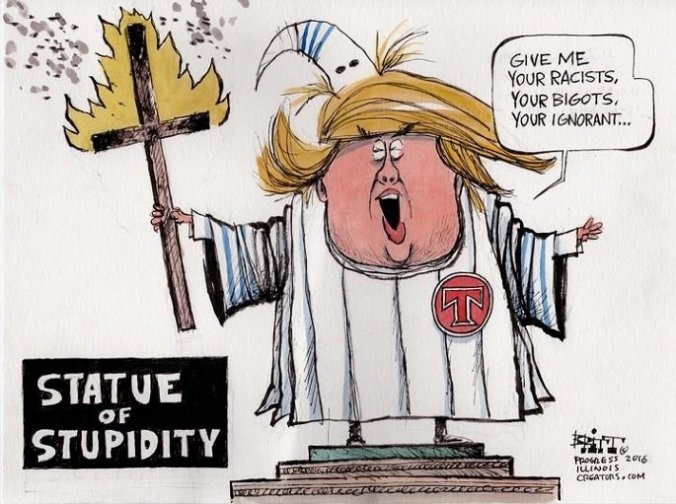 Trump was shouting with what he didn’t say. And Kessler, the rally organizer heard loud and clear; his take was that Trump didn’t say anything too bad about them, so he thought the rally was such a success that he has vowed to return. Trump has spent years being a divider. Although the media keeps expecting him to flip, old dogs don’t learn new tricks and why would he, it’s working for him; “I’m president, and they’re not” is how he would put. The pablum he issued is the best the CelebrityPresident could manage. He has no intention of trying to bring the country together. It’s not his style nor that of the Republican party. It’s not politically useful to do either.
Trump was shouting with what he didn’t say. And Kessler, the rally organizer heard loud and clear; his take was that Trump didn’t say anything too bad about them, so he thought the rally was such a success that he has vowed to return. Trump has spent years being a divider. Although the media keeps expecting him to flip, old dogs don’t learn new tricks and why would he, it’s working for him; “I’m president, and they’re not” is how he would put. The pablum he issued is the best the CelebrityPresident could manage. He has no intention of trying to bring the country together. It’s not his style nor that of the Republican party. It’s not politically useful to do either.
 There is not a single top Republican operative left in a West Wing where Trump‘s closest advisers are family members, a dystopian ideologue and three generals, no one remotely familiar with the electoral process and its importance in the underpinning of representative government. John McCain in his speech on health care reform on the Senate floor said something really important; the Senate is the equal of the president. The Founding Fathers conceived the power of the Senate as superior to that of president; it has only been with the growth of the executive branch, the multiplicity of agencies and burgeoning of the national security complex that the president has come to dominate national policy making.
There is not a single top Republican operative left in a West Wing where Trump‘s closest advisers are family members, a dystopian ideologue and three generals, no one remotely familiar with the electoral process and its importance in the underpinning of representative government. John McCain in his speech on health care reform on the Senate floor said something really important; the Senate is the equal of the president. The Founding Fathers conceived the power of the Senate as superior to that of president; it has only been with the growth of the executive branch, the multiplicity of agencies and burgeoning of the national security complex that the president has come to dominate national policy making. Generals are notoriously nonpolitical; their party affiliation is usually unknown and they have not engaged in the political process. For the most part, those that have spoken out politically have been fired. Now General Kelly has been tasked with controlling 45’s schedule as Chief of Staff, further walling him off from Republicans and probably Democrats as well. Is a phalanx brewing? Neither McMaster, Kelly or Mattis are known as congenial interactors with politicians or the press. But more importantly, they are steeped in military tradition and discipline which of necessity views the world through an apolitical lens that carries a hard line aggressive edge toward the enemy, whether foreign or now by extension, domestic opposition. This is why, excluding Flynn, an advocate of a conception of western civilization inclusive Russia against the infidel Muslims, the lack of reaction from the generals to the Russia-gate evidence is simply mind boggling. Quite simply, it’s difficult to understand why they would not have resigned, unless they too have been mesmerized into blind obedience to the president. And a military man’s blind allegiance to a leader is a dangerous thought.
Generals are notoriously nonpolitical; their party affiliation is usually unknown and they have not engaged in the political process. For the most part, those that have spoken out politically have been fired. Now General Kelly has been tasked with controlling 45’s schedule as Chief of Staff, further walling him off from Republicans and probably Democrats as well. Is a phalanx brewing? Neither McMaster, Kelly or Mattis are known as congenial interactors with politicians or the press. But more importantly, they are steeped in military tradition and discipline which of necessity views the world through an apolitical lens that carries a hard line aggressive edge toward the enemy, whether foreign or now by extension, domestic opposition. This is why, excluding Flynn, an advocate of a conception of western civilization inclusive Russia against the infidel Muslims, the lack of reaction from the generals to the Russia-gate evidence is simply mind boggling. Quite simply, it’s difficult to understand why they would not have resigned, unless they too have been mesmerized into blind obedience to the president. And a military man’s blind allegiance to a leader is a dangerous thought.  Away from the limelight, HHS has responded to evangelical imperatives by ending programs in comprehensive sex education, replaced contraceptive programs with abstinence only counseling and reintroduced women’s health educational information that is not supported and sometimes contradicted by accepted scientific evidence. They have reinstituted the Bush (43) Rule that will solely fund abstinence only programs internationally, not those that counsel or provide abortion services and curtailed funding for condom distribution in HIV programs. These actions have not been publicized generally but they are part of the accomplishments that are discussed in interactions with anti-abortion and Christian conservatives who remain committed to the idea that to mention sex is to encourage teens to have it. They don’t know that the internet has brought pornography to every teen electronic device with access by at least middle school.
Away from the limelight, HHS has responded to evangelical imperatives by ending programs in comprehensive sex education, replaced contraceptive programs with abstinence only counseling and reintroduced women’s health educational information that is not supported and sometimes contradicted by accepted scientific evidence. They have reinstituted the Bush (43) Rule that will solely fund abstinence only programs internationally, not those that counsel or provide abortion services and curtailed funding for condom distribution in HIV programs. These actions have not been publicized generally but they are part of the accomplishments that are discussed in interactions with anti-abortion and Christian conservatives who remain committed to the idea that to mention sex is to encourage teens to have it. They don’t know that the internet has brought pornography to every teen electronic device with access by at least middle school.  Trump has never seen himself as the leader of the Republican Party, another role that is traditional for the elected president. Trump, still smarting from the no-Trumpers and Republican elite opposition, sees his victory as bludgeoning them into submission. He is Caligula, master of his own destiny, who sheds foes as easily as dogs shed hair.
Trump has never seen himself as the leader of the Republican Party, another role that is traditional for the elected president. Trump, still smarting from the no-Trumpers and Republican elite opposition, sees his victory as bludgeoning them into submission. He is Caligula, master of his own destiny, who sheds foes as easily as dogs shed hair. 
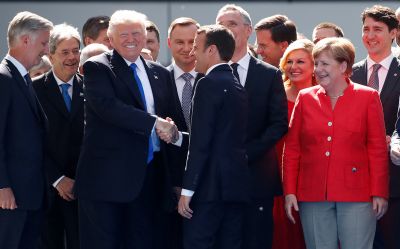 Trump has done some work toward smoothing the way for Putin to enhance his standing in the G20 circle, primarily by the more than 2 hour tete-a-tete which pushed the UK’s Theresa May to a later time slot, the Trump initiated chat at the G20 dinner, combined with some hand signalling after Trump returned to his seat some distance away across the table. That signalled that the US now sees Moscow as a major player, not the pariah who stole Crimea. On the other hand Germany’s Merkel, sensing that Trump is an increasingly unreliable ally, has called for Europe to forge their own way; while there are common economic initiatives with Moscow, Europeans are increasingly wary about Putin’s aggressive cyber and social media interventions in their elections.
Trump has done some work toward smoothing the way for Putin to enhance his standing in the G20 circle, primarily by the more than 2 hour tete-a-tete which pushed the UK’s Theresa May to a later time slot, the Trump initiated chat at the G20 dinner, combined with some hand signalling after Trump returned to his seat some distance away across the table. That signalled that the US now sees Moscow as a major player, not the pariah who stole Crimea. On the other hand Germany’s Merkel, sensing that Trump is an increasingly unreliable ally, has called for Europe to forge their own way; while there are common economic initiatives with Moscow, Europeans are increasingly wary about Putin’s aggressive cyber and social media interventions in their elections.  The steady drip of new disclosures in Russia-gate and the wreckage of Trump’s overreaction diminish the chance that he will be able to recover from the scandal to make nice with Putin. Increasingly being rubbed the wrong way by attacks on Sessions and Robert Mueller, GOP leaders have their quills up and pointed at the Russian bear. This may be why Putin finally announced his retaliation to Congressional sanctions and Obama’s seizures of Soviet compounds last December. After Michael Flynn’s signal that the Trump administration would be receptive after the inauguration and perhaps the Kushner exploration of the back channel communication using the Russian embassy, Putin was holding his breath, watching the subsequent back and forth in Washington in anticipation of at least the return of the two seized Russian diplomatic properties. The Congressional action was a giant step backwards. To add insult to injury not missed in Moscow, the sanctions were packaged into a bill with sanctions against North Korea and Iran, demeaning company for a country aspiring to a role as the other member in the dyad of global superpowers. More importantly, the Congress essentially inserted itself between the two leaders, at least as far as sanctions are concerned; sanctions signed into law tend to stick around for years.
The steady drip of new disclosures in Russia-gate and the wreckage of Trump’s overreaction diminish the chance that he will be able to recover from the scandal to make nice with Putin. Increasingly being rubbed the wrong way by attacks on Sessions and Robert Mueller, GOP leaders have their quills up and pointed at the Russian bear. This may be why Putin finally announced his retaliation to Congressional sanctions and Obama’s seizures of Soviet compounds last December. After Michael Flynn’s signal that the Trump administration would be receptive after the inauguration and perhaps the Kushner exploration of the back channel communication using the Russian embassy, Putin was holding his breath, watching the subsequent back and forth in Washington in anticipation of at least the return of the two seized Russian diplomatic properties. The Congressional action was a giant step backwards. To add insult to injury not missed in Moscow, the sanctions were packaged into a bill with sanctions against North Korea and Iran, demeaning company for a country aspiring to a role as the other member in the dyad of global superpowers. More importantly, the Congress essentially inserted itself between the two leaders, at least as far as sanctions are concerned; sanctions signed into law tend to stick around for years. As a Russian strong man, Putin had no choice but to strike back, although he has done so without characteristic bombast, leaving Sergey Lavrov his foreign minister to blame the decline in relations on the Congressional “Russophobic forces that are pushing Washington toward confrontation”. Using diplomatic nuance by citing cooperative efforts in Syria to create safe zones and collaborative oil and gas projects, Putin left open possibilities for reversing the sharp nose dive and left some wiggle room for concessions, delaying the start date until September 1, unlike the 48 hour timetable Obama used to expel Russian diplomatic personnel. He may be pinning his hopes on Kremlin intelligence that US opinion polls still show that 80% of Republicans have a favorable view of Russia. Evangelicals apparently have a cult of Putin which praises him for the resurrection of the Russian church. However, Mike Pence, in a speech in Estonia, committed the US to NATO defense of Russian neighbors, Estonia, Lithuania and Latvia, even as a Russian military exercise of 100,000 troops is massing in Belarus. Pence had doubled down.
As a Russian strong man, Putin had no choice but to strike back, although he has done so without characteristic bombast, leaving Sergey Lavrov his foreign minister to blame the decline in relations on the Congressional “Russophobic forces that are pushing Washington toward confrontation”. Using diplomatic nuance by citing cooperative efforts in Syria to create safe zones and collaborative oil and gas projects, Putin left open possibilities for reversing the sharp nose dive and left some wiggle room for concessions, delaying the start date until September 1, unlike the 48 hour timetable Obama used to expel Russian diplomatic personnel. He may be pinning his hopes on Kremlin intelligence that US opinion polls still show that 80% of Republicans have a favorable view of Russia. Evangelicals apparently have a cult of Putin which praises him for the resurrection of the Russian church. However, Mike Pence, in a speech in Estonia, committed the US to NATO defense of Russian neighbors, Estonia, Lithuania and Latvia, even as a Russian military exercise of 100,000 troops is massing in Belarus. Pence had doubled down.